
We would like to thank Scythe for providing us with a review sample of their Big Shuriken 3 heatsink. Without their generosity, this review would not be possible.
Scythe, the heavy hitting underdog of the HSF world, has once again hit us with another surprise entry into the SFF market with their Big Shuriken 3. At just 70mm tall, it will be interesting to see how this cooler compares to the competition.
Packaging
The packaging looks exactly like we have come to expect from Scythe. There is not much else that can be said besides it doing a adequate job to protect the internal contents.
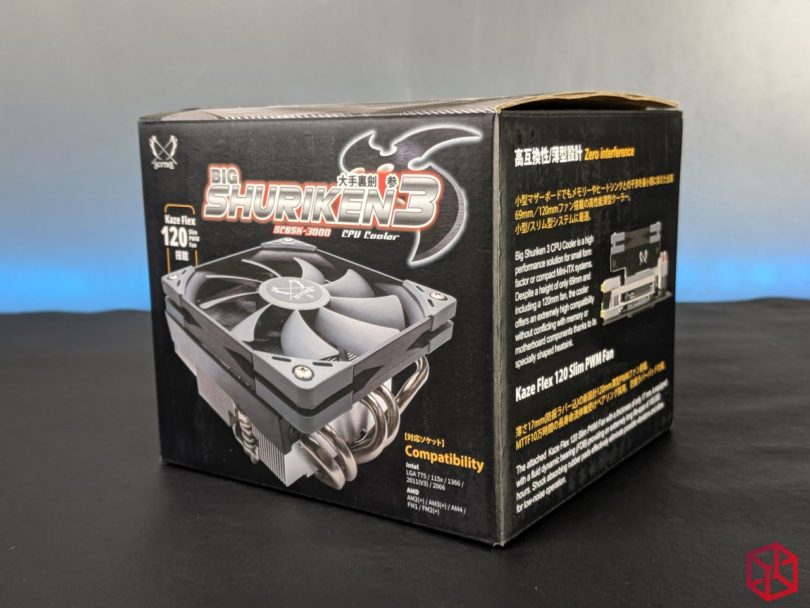
Scythe was generous enough to include an extra 120×25 KazeFlex PWM fan for this review. With the addition of this fan, we will compare the performance of the 9-Blade, which is 15mm tall, to the 11-blade variant that is 25mm tall. For a deeper comparison, I’ll even pit these fans against Noctua’s offerings as they continue to dominate the landscape.
With these Scythe fans in-hand, I want to state that I am having some serious feelings of nostalgia here —I’ve long used Scythe’s highly coveted S-Flex series in every one of my builds. The FDB bearings used in Scythe’s fans are no joke and have always lead to some impressive performance figures at very attractive prices. The bearings used in the S-Flex series were manufactured by Sony but I’m not privy to who their current supplier is.
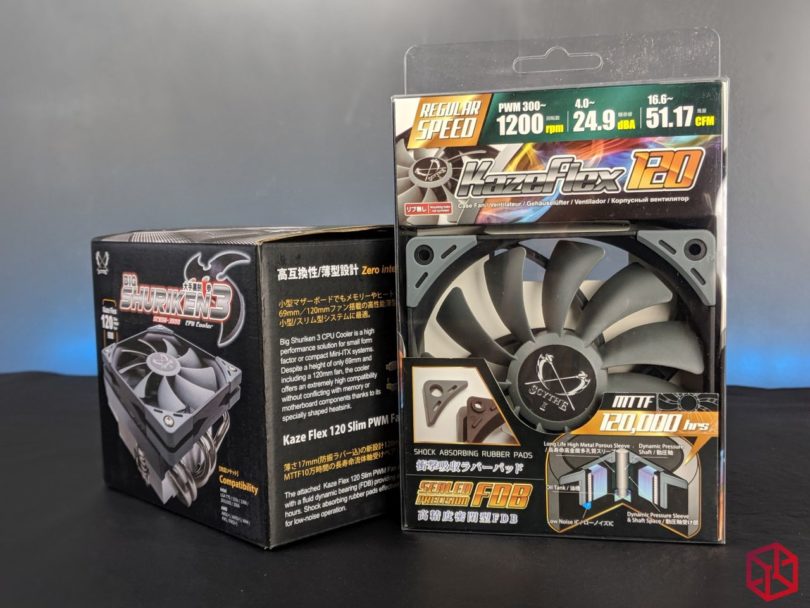
I want to explicitly thank Scythe for including detailed measurements on the side of the package. We absolutely love this kind of stuff!
Unfortunately, I did find a single measurement inaccuracy that is working to their disadvantage here and I hope that they will fix it. In the center-most picture, it shows that there is only 26mm of height under the HSF but my digital calipers measured roughly 30-31mm (it’s an odd angle to capture). This is likely a simple typo but hey, 5MM is 5MM and that difference may allow this cooler to clear the taller heatsinks we’ve seen on the new x570 chipsets.
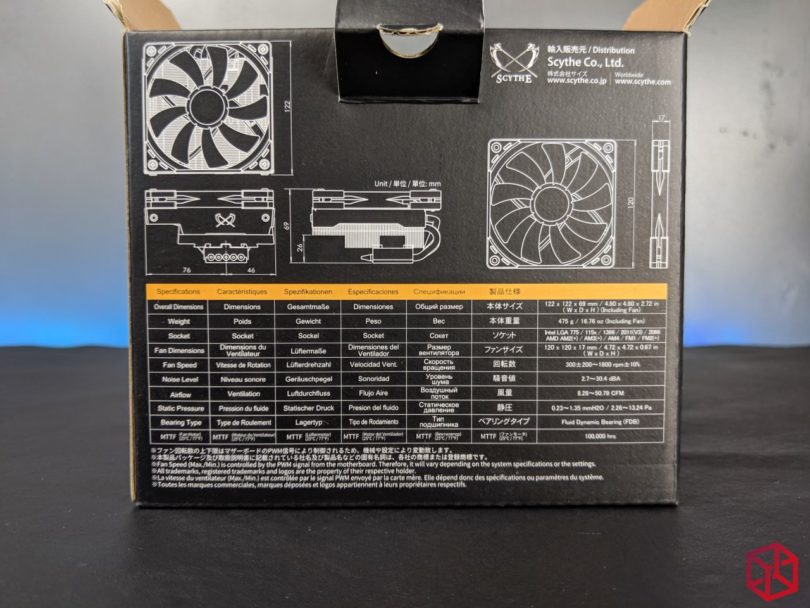
Inside the box is a very simple affair; one box of parts and one heatsink.
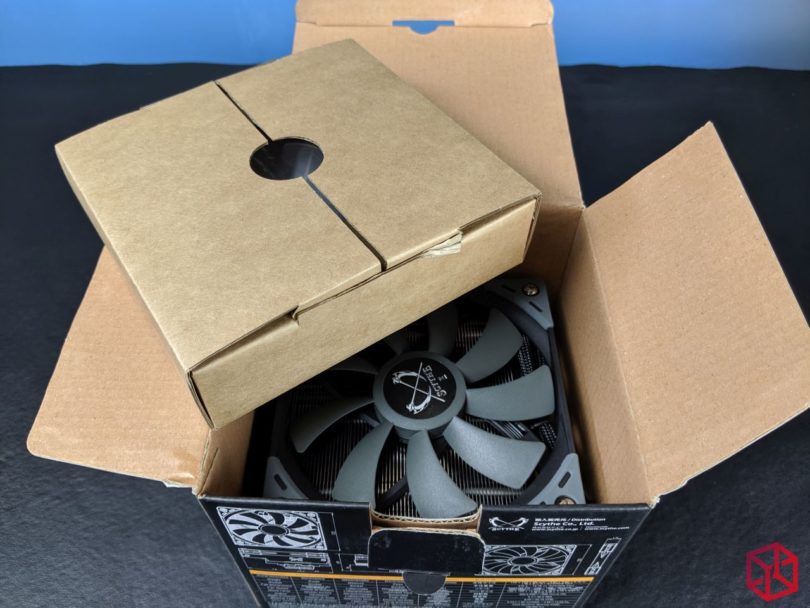
Inside the box are the installation instructions, hardware for both Intel and AMD platforms, as well as a small tube of thermal paste.
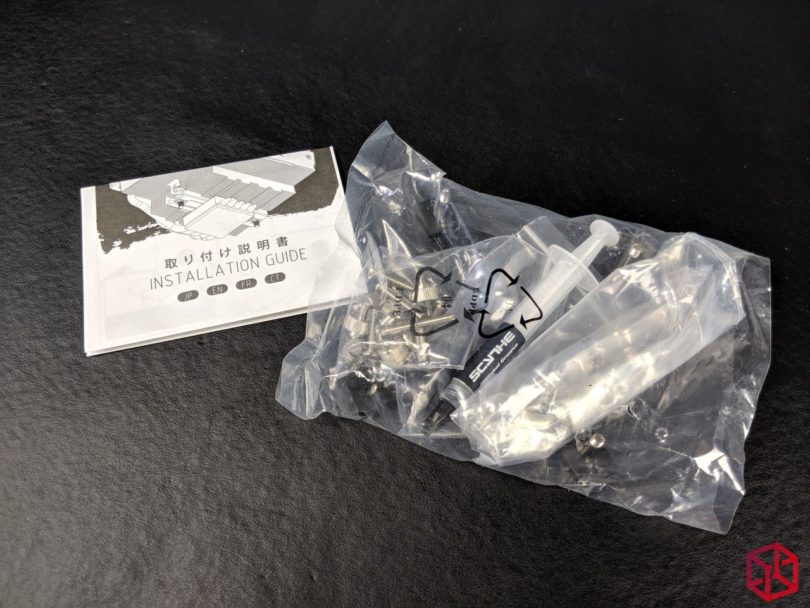
The AMD installations will rely on the use of preinstalled motherboard backplates.
The Intel installations require a blackplate (pictured below in Black) with adjustable mounting points to support multiple socket configurations. The ease of installation will depend on how open and easily accessible your mobo tray is.
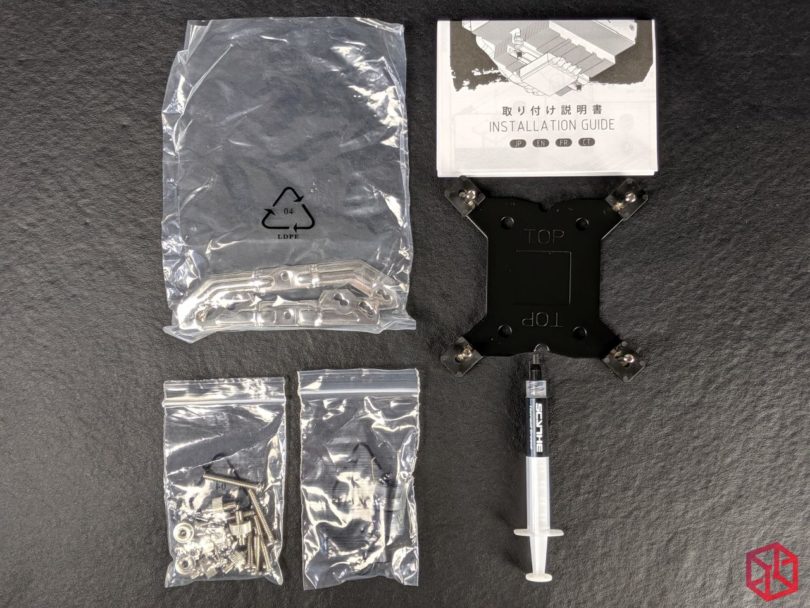
Opening the instructions we find several drawings that are crystal clear and do a terrific job to simplify the installation experience. No IKEA trouble’s here!
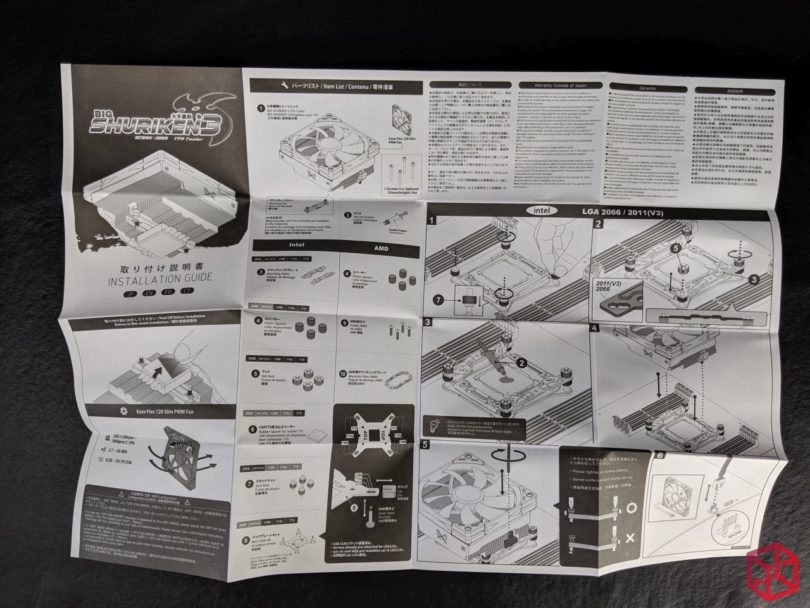
Product overview
Below is comparison of the two fans. On the left we have the 120x25MM fan and on the right, preinstalled, we have the 120x15MM. Construction of the fans are rock solid with zero flex in the housing and the vibration dampers are very easy to remove and re-apply as needed. Kudos go to Scythe for using a very muted color scheme compared to this world so overflooded with RGB. Normally, I would try to illustrate how more fan blades provide better performance but in the measurements we captured it barely made a difference. Your mileage may vary.
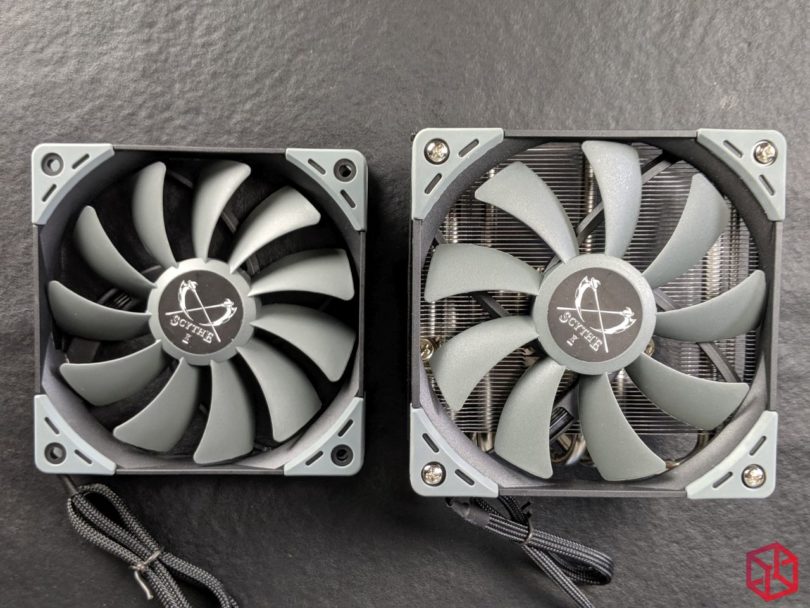
Here you can see the height difference that 10mm makes between the two fans. Surprisingly though, that difference doesn’t provide much of a boost in performance, I’ll cover that in the benchmarks below.
Thankfully, the Big Shuriken 3 includes extra hardware to support the installation of any 25mm fan that you prefer.
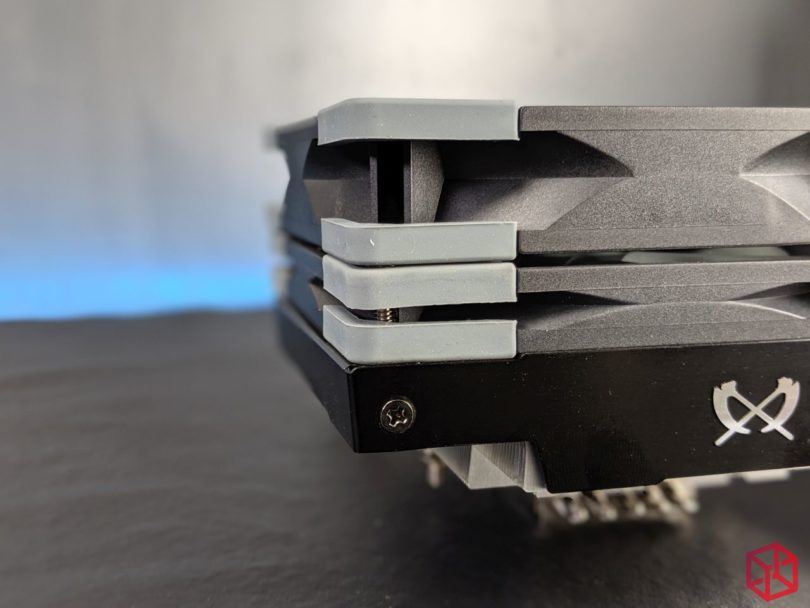
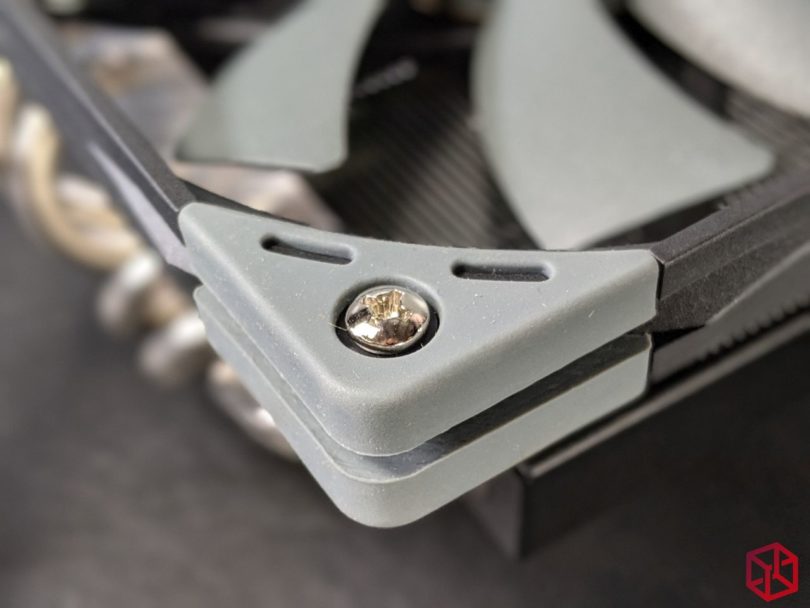
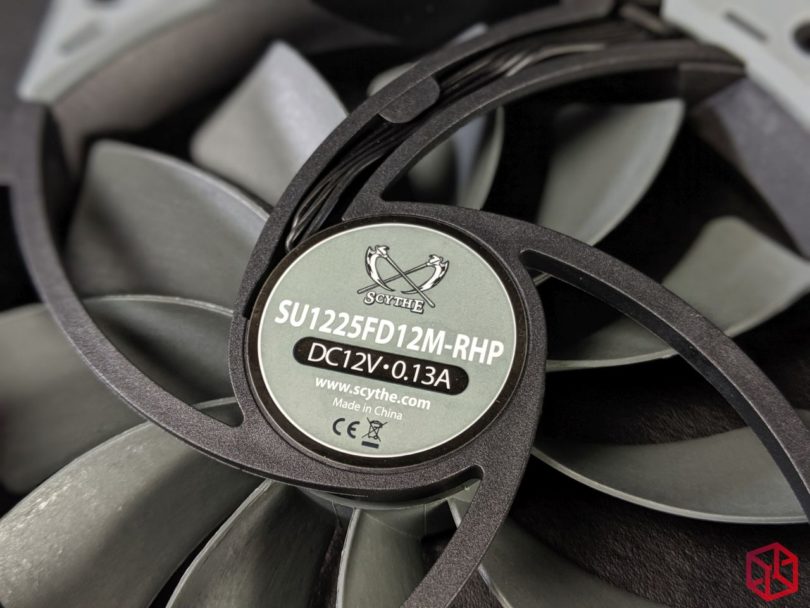
Unlike Noctua who simply refuses to use more attractive cabling, we’re very pleased to see Scythe using all black cables. It’s a subtle detail that helps elevate a expert-level build from a nine to a ten.
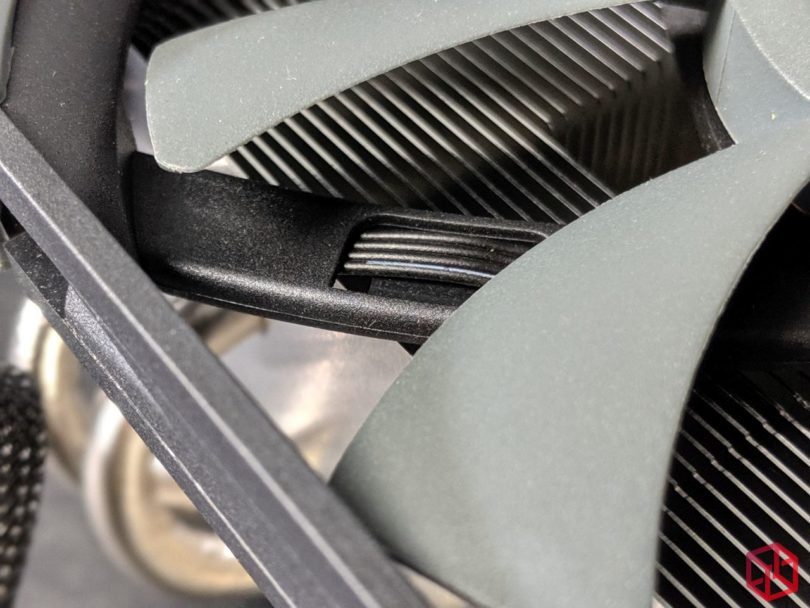
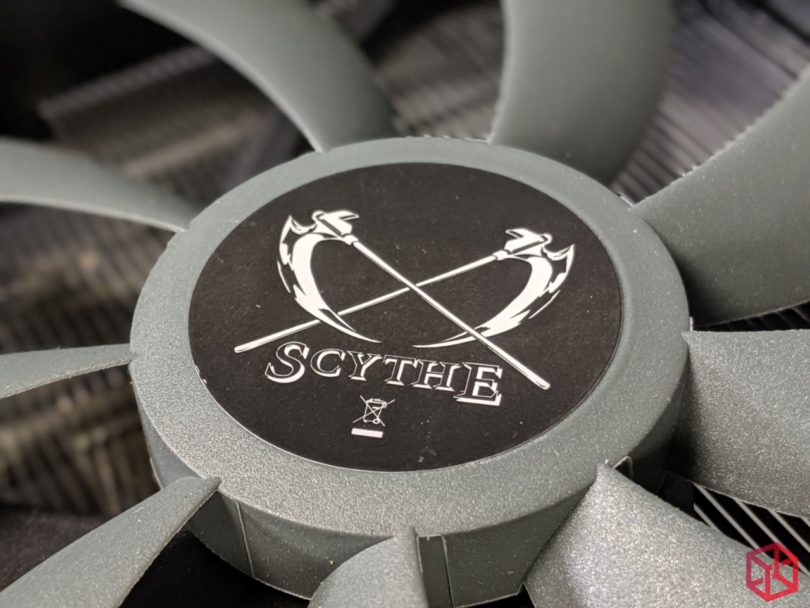
Not that a tight weave is necessary over such dark cables but the sleeving used on both fans looks very premium.
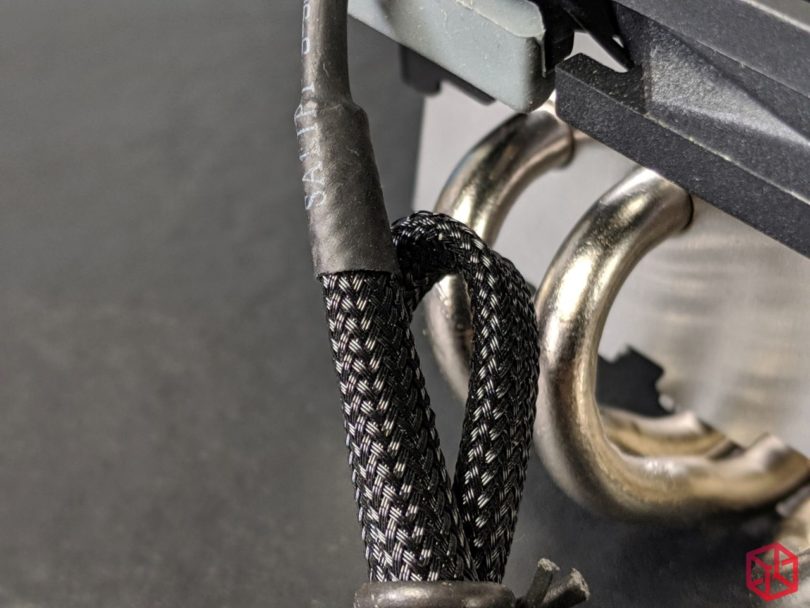
To the benefit of this cooler’s performance, the Big Shuriken 3 employs a cooling shroud to help ensure that all airflow carries through the fins instead of dispersing out the sides. This form of ducting is exactly what they do in the motorsports world to help ensure that all air is forced through the radiator and/or oil cooler.
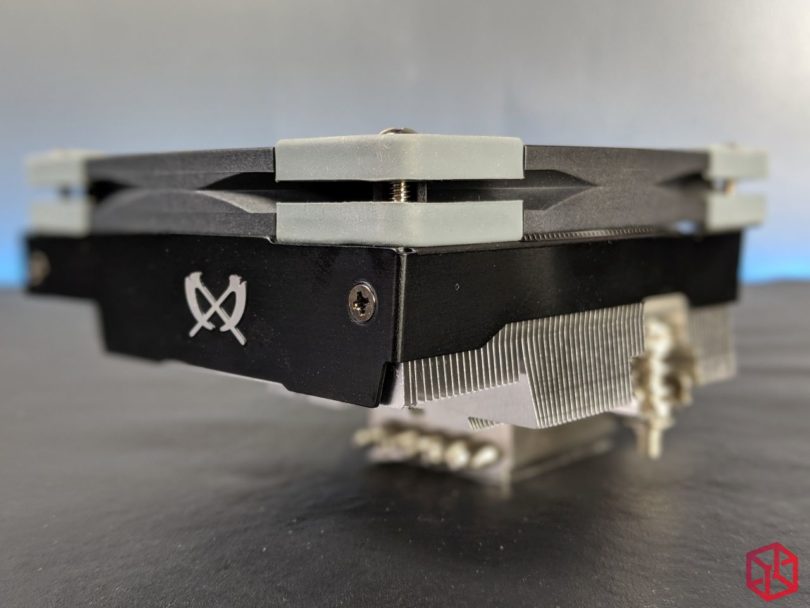
Should the shroud come into contact with any of your components, it can be removed from the heatsink using a Phillips-head screwdriver.
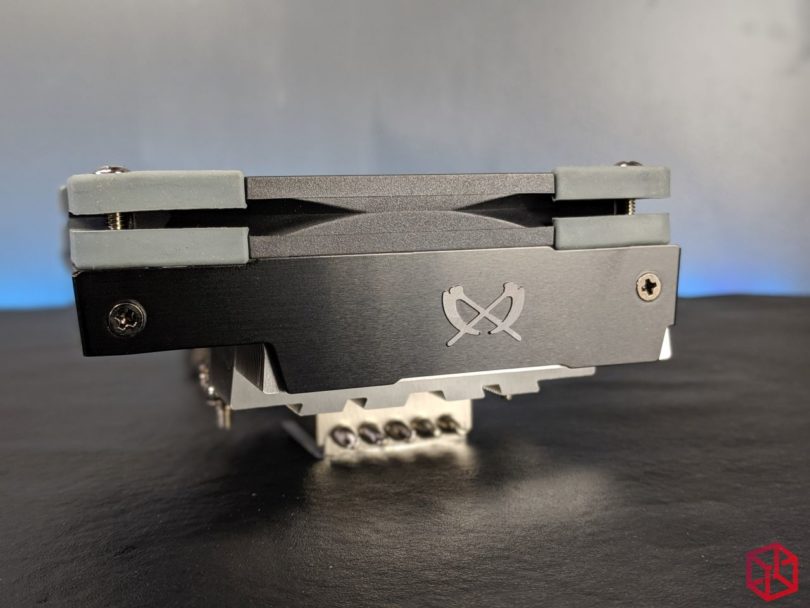
The Scythe logo is affixed to the side of the ducting. From afar it looks very understated but up close I think it looks pretty slick.
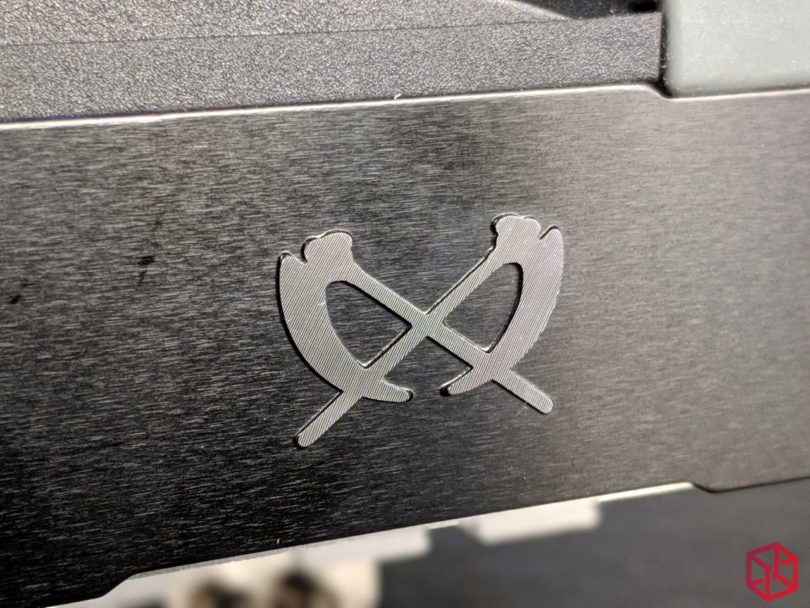
Here we can see the precision that was used to stamp the holes that the 5 heatpipes run though. At this point we would expect nothing less from Scythe —they have repeatedly illustrated to the world that they know what they are doing.
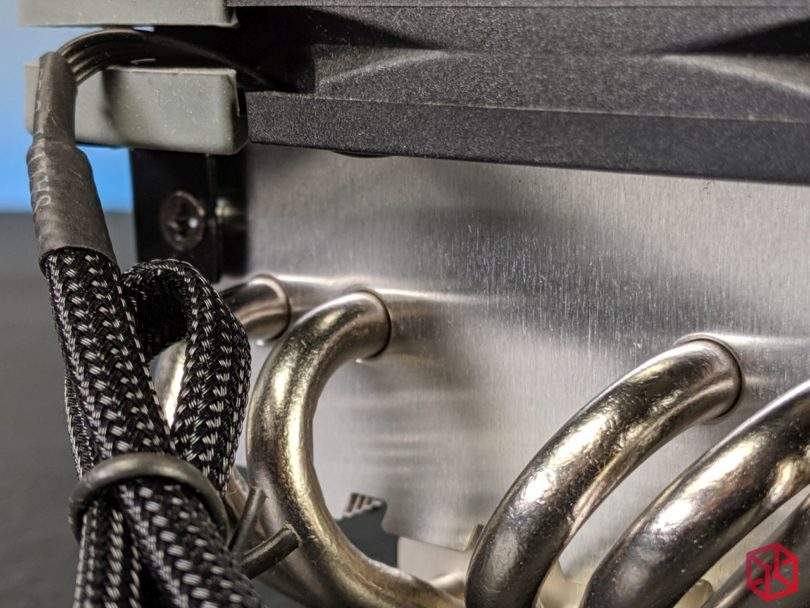
This impressive array of fins, and all it’s unique cuts, are used to help dissipate heat carried from the processor by the 5 heatpipes. That’s one more heatpipe than the 66mm tall Noctua NH-L12 we’ll be testing it against, so we’ll see if that helps it at all.
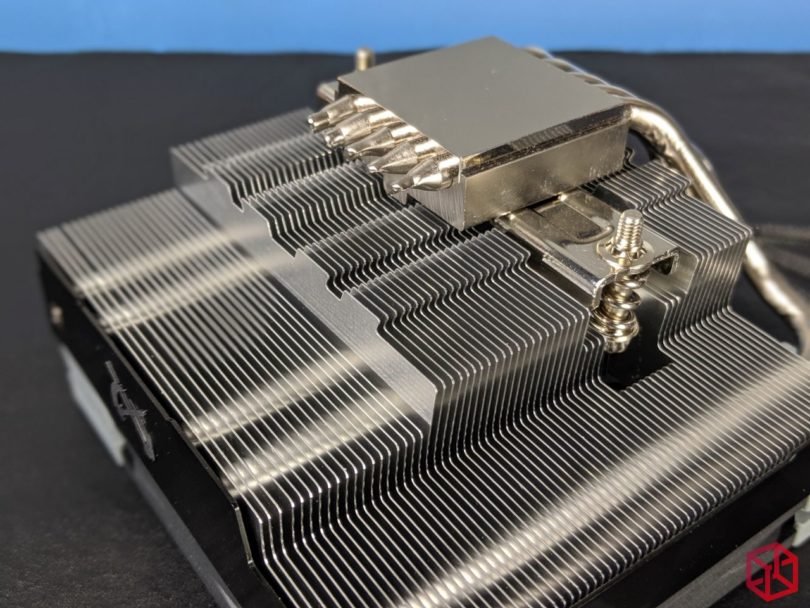
The base of the heatsink is polished to a mirror finish. This will provide a near-perfect contact patch.
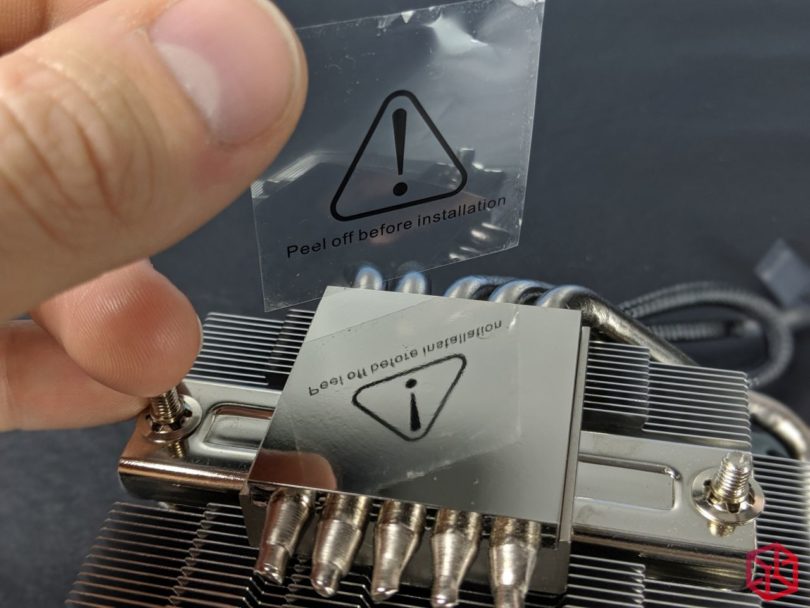
Here we can see the heatpipes making a perfect seal with the base as well as the generous hunk of aluminum that sits just above it.
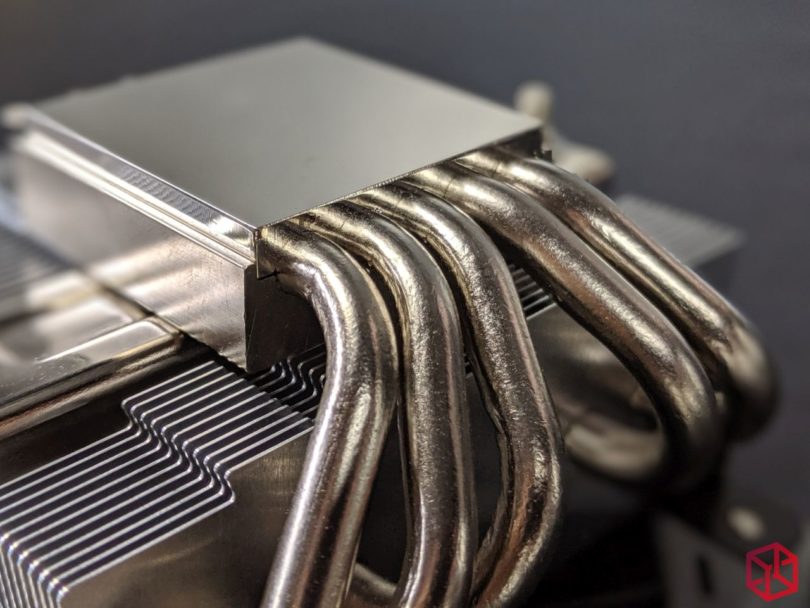
Measurements
The heatpipes used are a respectable 6MM in diameter.
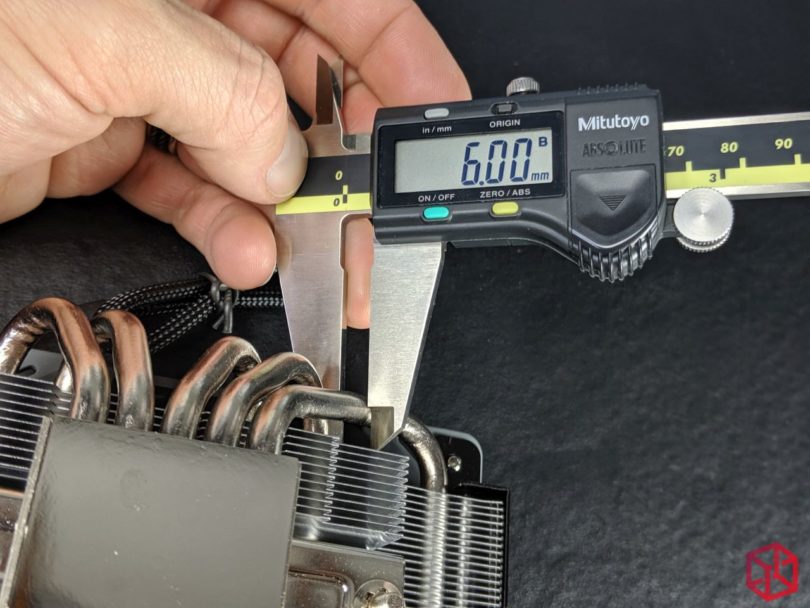
We measured a total height of 69.66MM from the base to the screws that protrude ever so slightly from the fans.
While the packaging may call this 69mm, we’re going to call this 70mm.
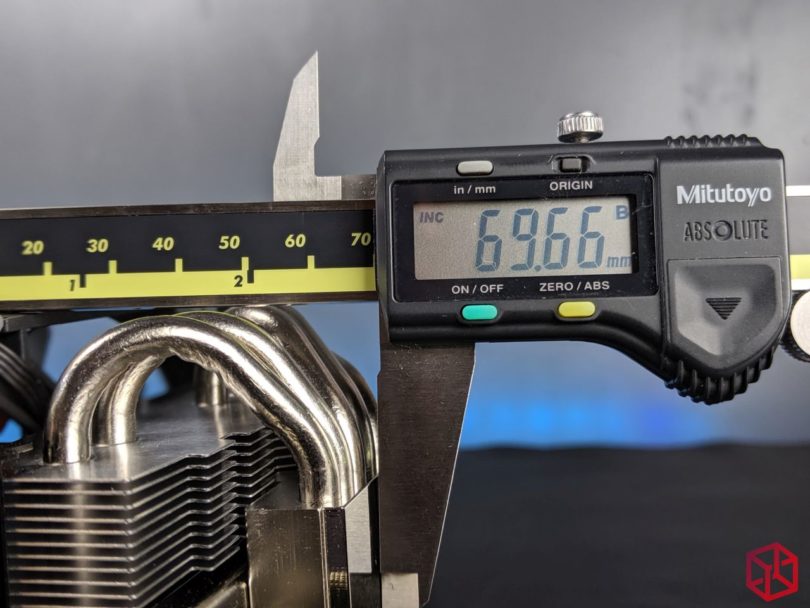
Installation
Here is a very nice little detail that caught my attention. For the installation of the heatsink, Scythe has one-upped Noctua by including vibration dampeners on the HSF standoffs.
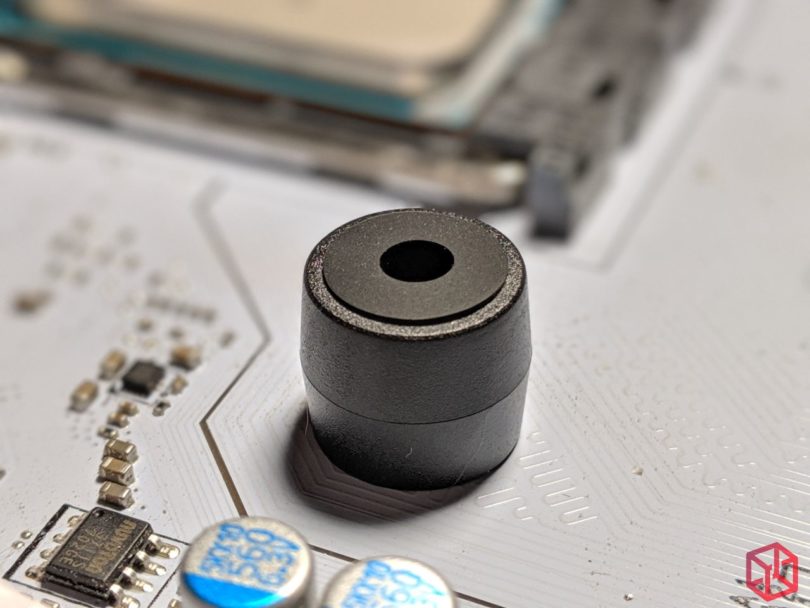
The added grip that the vibration dampeners provide also help with the installation of the mounting brackets in that they don’t slide around while trying to thread the screw into place.
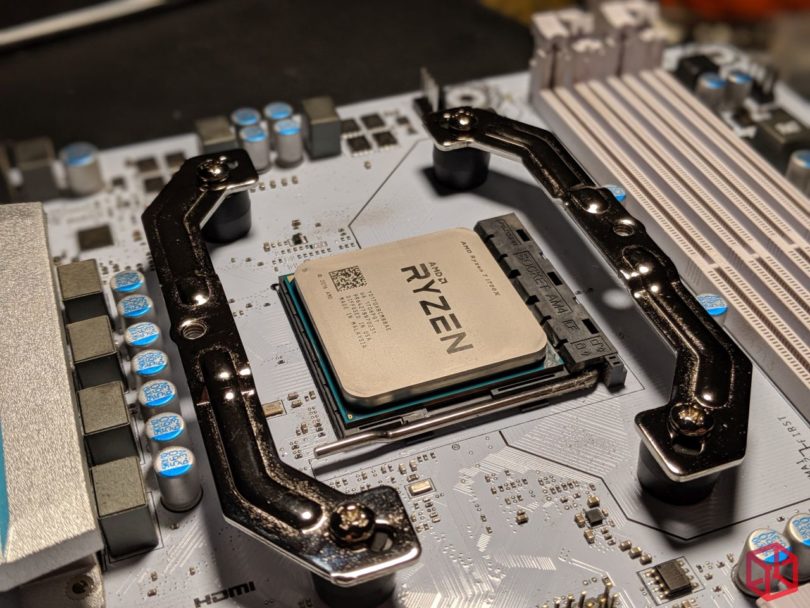
Wow, look at that color combination! No beige and brown here…
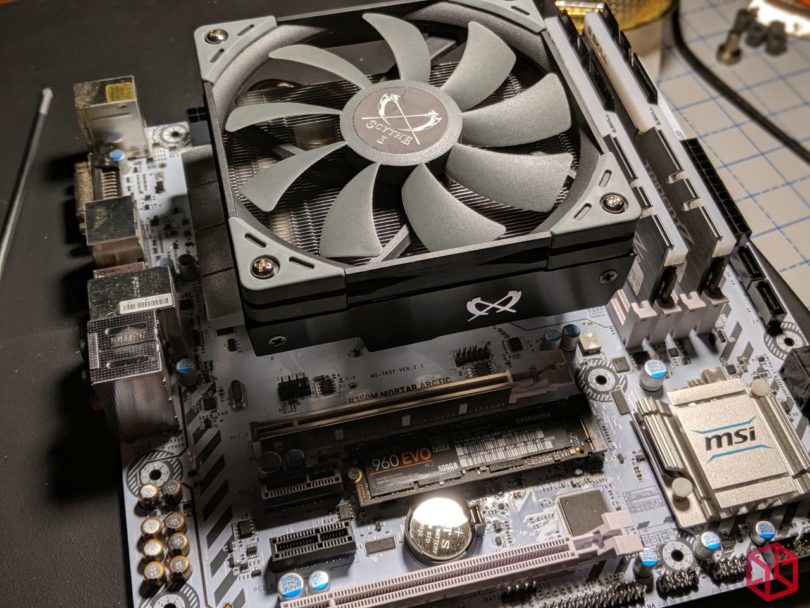
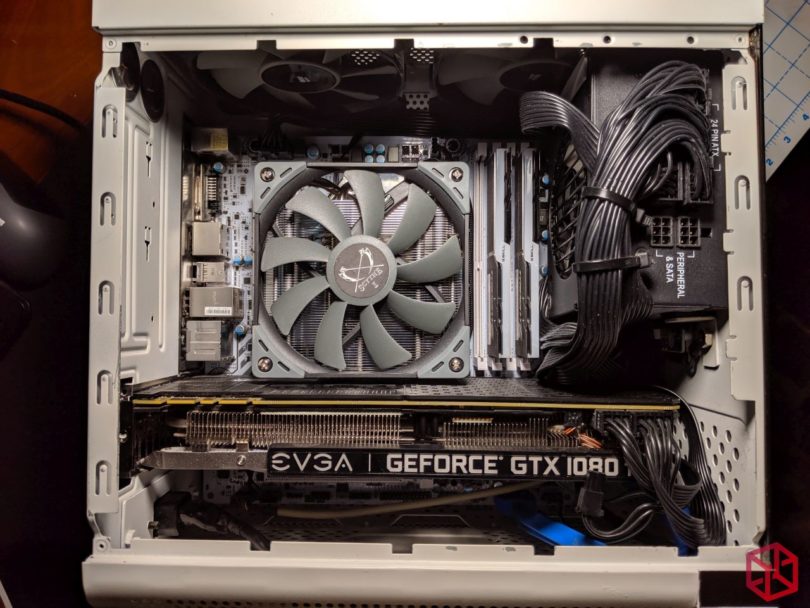
Test Setup
For this test I will be using an EVGA Hadron chassis with 2x 120mm Corsair PWM fans helping to exhaust the heat.
All intake of fresh air is collected through the underside of this chassis as the side panel is not ventilated.
The side panel was closed for this review because the heatsinks tested both fit inside the case without issue.
Test bench:
CPU: AMD Ryzen 1700x (8c/16t)
Motherboard: MSI B350M Mortar Arctic mATX
Memory: 16GB of DDR4 @ 3200MHz (C14, 2x8GB)
Storage: Samsung 960 EVO 500GB
Power Supply: Corsair SF600
Chassis: EVGA Hadron
Software Used:
Windows 10 (ver. 1809)
CPU-Z 1.86.0
HWMonitor 1.37
Results
The following graph contains 2 different heatsinks and the use of 6 different types of fans.
Heatsinks: From Noctua we have the NH-L12 and from Scythe we have the Big Shuriken 3.
Fans: From Noctua we have the 92mmx25 NF-A9, the 120mmx25 NF-F12, the 120mmx15 NF-A12x15, and the 120mmx25 NF-A12. From Scythe we have the KazeFlex 120x15mm and the KazeFlex 120x25mm.
The graph is sorted by height, with the shortest configuration at the very top.
This was done to help illustrate any possible gains in performance that could be achieved by using a larger and generally more quiet 25mm fan.
Please bear in mind that CPU voltage is never constant, so any margins of +-1 degree are to be considered within the margin of error.
To help showcase the quality of Scythe’s included fans, as well as the price:performance ratio they offer, I tested the Big Shuriken 3 using the same size fans (15mm and 25mm) from Noctua.
At any point in the graph, it’s clear that Scythe’s hardware offers comparable performance to the similarly sized, and slightly more expensive Noctua hardware.
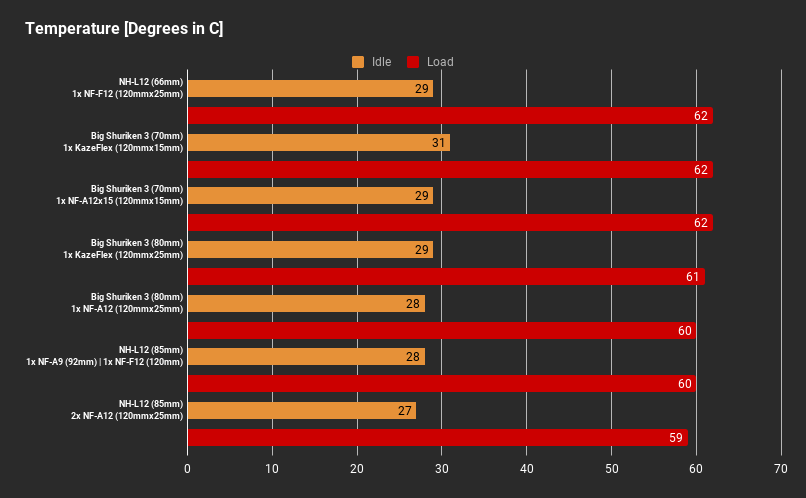
I want to highlight three things that I gathered from the graph above:
– The Noctua NH-L12 with a NF-F12 fan parked below it offered the same performance as the Big Shuriken 3 using the same fan.
– The Big Shuriken 3, with the $30 NF-A12 fan installed, was only 1 degree cooler than the $12 120×25 KazeFlex fan.
– The Big Shuriken 3, with the $12 120×25 KazeFlex fan installed, matched the performance of the NH-L12 with both of the included fans installed (92mm and 120mm)
Conclusion
$45. That’s the cost of this extremely attractive looking heatsink that trade blows with Noctua’s NH-L12 that had an MSRP of $65 when it was on the market. Today, a similar option from Noctua would be the 70mm NH-L12S priced at $50 but then… beige.
When the Scythe KazeFlex fans were replaced with comparable fans that cost upwards of $20-$30, only a degree of difference could be gained —which is well within the margin of error when you consider that CPU voltage is never constant.
All in all, if you have a case that can fit a 70mm tall heatsink, the Scythe Big Shuriken 3 should absolutely be on your shortlist. On an aside, the Scythe Kazeflex series of fans performed admirably and are worth considering —I would even take the 1 degree hit in performance just to drop the color beige from my builds and I think I just might.
Please let us know your thoughts on the forums here.
